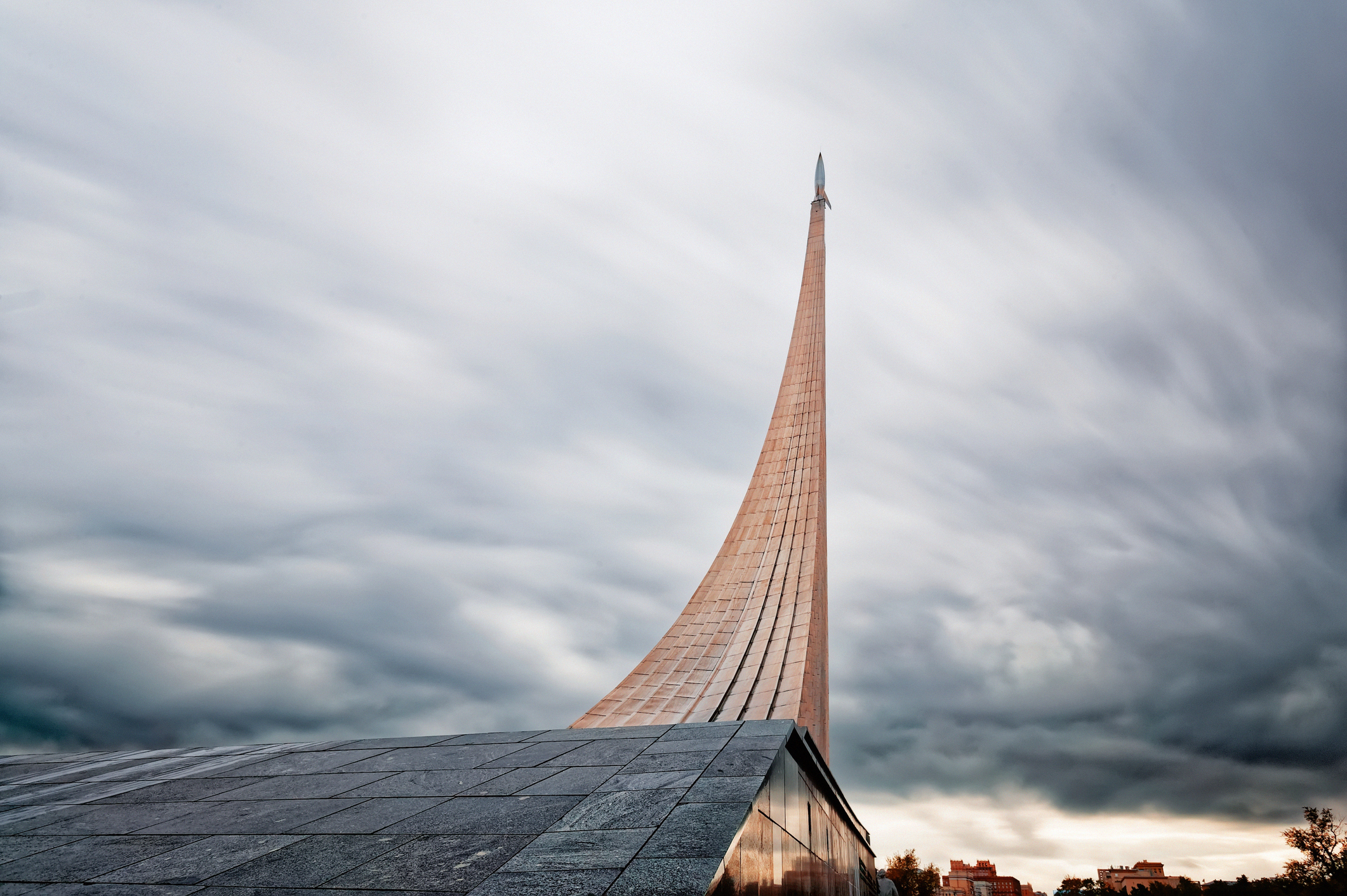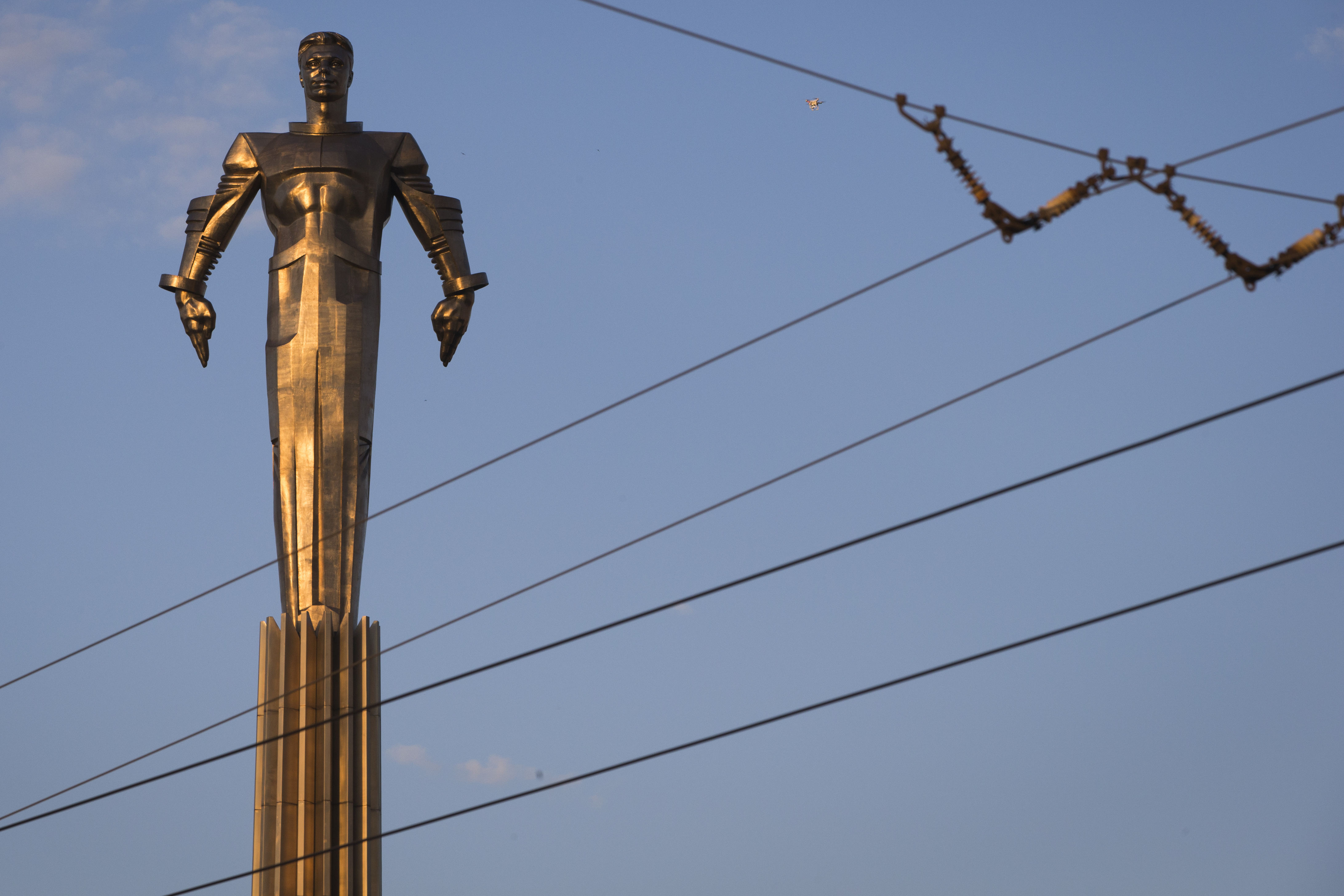What Russia's absurdly over-the-top monuments get right about space
Now that makes you look up in awe


When it comes to monuments, Russia does nothing halfway. It is, after all, a country that recently dedicated a 30-foot-tall monument to the inventor of the AK-47 assault rifle, counts a 481-line poem about a statue of Peter the Great among its most valued literary treasures, and somehow allowed this abomination to stand in its capital for two decades. Naturally, then, monuments celebrating the Soviet Union's Space Race victories reach absurd and often literally great heights.

Although the United States was the first country to put a man on the moon, we don't share quite the same flair for drama as our former cosmic competitor. While America does have several monuments dedicated to the Mercury, Gemini, and Apollo astronauts, as well as a somber memorial to the 24 people that have died in our space program, such dedications tend to be small, understated, or just plain bad (seriously, the Mercury monument looks like Prince's love symbol). Yet even as all but the most glorious or tragic American space projects have been forgotten, Russia has managed to keep the accomplishments of its aeronautic heroes in the public consciousness with its monuments.
The fact that America lacks the same over-the-top displays as Russia could admittedly be chalked up to the idea that the U.S. had — and has — nothing to prove. While America might have had a slow start to the Space Race, pretty much everyone today agrees that we ultimately won. The USSR, on the other hand, was faced with a crumbling communist experiment and the need to justify to its people the heavy strain of resources that its space program required; as such, it had greater pressure to partake in the nationalistic vanity project of monument construction. Still, it's hard not to be awed by Russia's tributes to the explorers of space when visiting the country today.
The Week
Escape your echo chamber. Get the facts behind the news, plus analysis from multiple perspectives.

Sign up for The Week's Free Newsletters
From our morning news briefing to a weekly Good News Newsletter, get the best of The Week delivered directly to your inbox.
From our morning news briefing to a weekly Good News Newsletter, get the best of The Week delivered directly to your inbox.
Take the not-especially-humbly-named Monument to the Conquerors of Space, located in Moscow's Cosmos pavilion. Standing 351-feet tall — 45 feet taller than the Statue of Liberty — the shimmering titanium structure depicts the sweeping plum of a rising rocket. Along the monument's stone base are images of the men, women, and canine who contributed to the advancement of the country's space program. Built in 1964, the Monument to the Conquerors of Space was perhaps a bit premature, seeing as Apollo 11 was five years away from beating the Soviets to the moon, but it is nevertheless incredible to take in, especially during the silvery glint of a Moscow winter. The monument in recent years has freed itself from its original nationalistic intentions: Below its base is the Russian Museum of Cosmonautics, which includes exhibits celebrating not just the domestic space program but international achievements, including the United States'.


Yuri Gagarin, the first man in space, is also depicted all across Russia in various monuments. The biggest and most noteworthy statue is the Monument to Yuri Gagarin in Gagarin Square, erected for the 1980 Olympics. Like the Conquerors of Space, the statue uses an exhaust plume to make up the base of the obelisk, with a Transformer-esque Gagarin topping off the structure:


While Gagarin's feat is sure to be remembered, monument or no, even a Soviet space dog gets a statue in Russia. Laika, the first animal to orbit Earth, is memorialized by a 2008 statue that shows a rocket morphing into a gentle, cradling hand:

Space monuments are hardly limited to Moscow proper, though. The statue of Valentina Tereshkova, the first woman in space, is set in the Siberian city of Novosibirsk, where she landed after her orbit. The Space Exploration Monument in Zhitomir, Ukraine, marks the birthplace of Sergei Korolev, the architect of the USSR's rockets and satellites. The Cosmonaut Monument in Kaliningrad commemorates four locally-born astronauts, including Alexei Leonov, the man to do the first spacewalk. Glory of the Space Explorers, a 1962 monument on the outskirts of Moscow, shows an anonymous Soviet stretching toward the sky with the first Sputnik satellite gripped in one hand.
A free daily email with the biggest news stories of the day – and the best features from TheWeek.com
Because space exploration in particular is a collective project, such monuments celebrate a shared experience and help justify their intrusion in a public space. This is especially true now as space programs become increasingly international. Unlike statues depicting the likeness of politicians or war heroes, space monuments celebrate a distinctly human victory.
What better way to honor the efforts of those that made it possible than having another reason to tilt your head back and look up in awe?
Jeva Lange was the executive editor at TheWeek.com. She formerly served as The Week's deputy editor and culture critic. She is also a contributor to Screen Slate, and her writing has appeared in The New York Daily News, The Awl, Vice, and Gothamist, among other publications. Jeva lives in New York City. Follow her on Twitter.
-
 How to financially prepare for divorce
How to financially prepare for divorceThe Explainer Facing ‘irreconcilable differences’ does not have to be financially devastating
-
 Why it’s important to shop around for a mortgage and what to look for
Why it’s important to shop around for a mortgage and what to look forThe Explainer You can save big by comparing different mortgage offers
-
 4 ways to save on rising health care costs
4 ways to save on rising health care costsThe Explainer Health care expenses are part of an overall increase in the cost of living for Americans
-
 Inside Siberia's 'megaslump' – and why it is getting bigger
Inside Siberia's 'megaslump' – and why it is getting biggerUnder The Radar The 'eerie sinkhole' is rapidly expanding and climate change is the reason why
-
 Russian lunar spacecraft crashes into the moon
Russian lunar spacecraft crashes into the moonSpeed Read
-
 Nord Stream pipelines may have leaked a record-breaking amount of methane
Nord Stream pipelines may have leaked a record-breaking amount of methaneSpeed Read
-
 Russia will leave the International Space Station after 2024
Russia will leave the International Space Station after 2024Speed Read
-
 Russia blasts satellite to smithereens, insists it didn't put astronauts in danger with space shrapnel
Russia blasts satellite to smithereens, insists it didn't put astronauts in danger with space shrapnelSpeed Read
